Updated: 30th December 2023
I find myself frequently changing handlebars with each new bike touring adventure. After experimenting with various types, I’ve developed a few favorites, yet I remain open to trying new options.
My top picks are the butterfly or trekking bar and flared drop bars, but remember, choosing handlebars is ultimately a matter of personal preference. I encourage you to try different styles to discover what suits you best.
Comfort is paramount when it comes to bike touring, and it’s crucial to ensure stability at the main body contact points with the bike. These points play a significant role in keeping you comfortable throughout the countless miles of your journey. For bike touring, the two critical areas to focus on are your saddle and handlebars.
In this article, we’ll delve into what makes a set of handlebars ideal for touring and explore some of the best options available, helping you make an informed decision for your next purchase.
For this piece, I reached out to numerous bike tourers and bikepackers to gather their recommendations on handlebars. I’ll share these insights later, but first, let’s consider the key aspects to keep in mind when selecting handlebars for your touring bike.
Wrist Comfort: This is essential for overall comfort while riding. Given the extensive hours, days, or even years you might spend on your bike, the handlebars must alleviate any joint pressure. The best touring handlebars offer multiple hand positions, allowing you to vary your grip and relieve discomfort.
I favor butterfly handlebars for their versatility in hand positions. They enable you to change your grip across five or more positions, reducing arm fatigue and preventing soreness from prolonged static positioning. On the other hand, standard flat bars may cause nerve pain or damage due to continuous pressure in one spot.
Your choice of handlebar also impacts your overall bike fit and posture. I’ve experimented with all-road handlebars and found that they often encourage a forward-leaning, race-like position, which started straining my back after extensive touring. However, I recently switched to flared drop bars with higher hoods, and they’ve noticeably improved my posture.
The style of the handlebar dictates the available mounting space for gadgets. I’ve discovered that butterfly bars, 500 mm flared drop bars, and others mentioned here offer ample space for mounting devices like cycle computers, phones, bells, and more, creating a cockpit akin to a spaceship. You can opt for handlebar extenders offering even more room for gadgets!
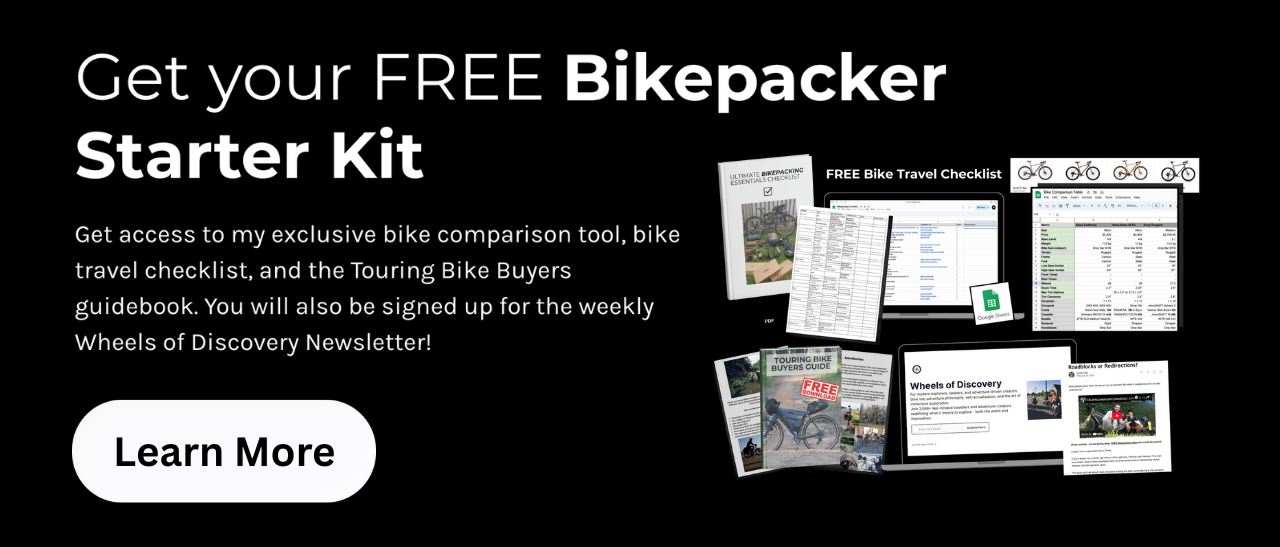
Handlebar Bag Compatibility: This is another crucial factor. Ensure that the bar’s length or dimensions are compatible with your handlebar bag. Some bikepacking bags designed for drop bars might be too long for narrower options. Additionally, if you’re considering a Rando bag, double-check its fit. Burrito bags or smaller handlebars bags offer excellent, convenient storage solutions.
Additionally, remember that there are various methods for attaching bags to your handlebars, including using handlebar harnesses and mounts, or specialized handlebar racks.
Handlebar Sizes and Stem Clamp Compatibility: Handlebars come in various stem clamp sizes. The standard 25.4 mm is common for most MTB handlebars, like my butterfly bars. There’s also the 31.8 mm (OS or oversized) diameter, growing increasingly popular for its strength and stiffness.
Bikepacking Handlebar Width: The bars in this article range from 500 to 800 mm. Wider handlebars offer greater stability and control, which is essential when navigating rough, uneven terrain often encountered in bikepacking. The wider grip helps in distributing the weight and balance more evenly, making it easier to handle the bike with a loaded setup. Wider bars allow for a more natural arm and shoulder position, reducing muscle fatigue and strain over long distances. This ergonomic benefit is particularly important in bikepacking, where riders spend extended periods on the bike.
Different Bikepacking Handlebar Setups
- All Road / Drop Handlebars
- Flared Dropbars / Gravel Handlebars
- Flat / Riser Handlebars (MTB Riser Bars with Ergon Grips)
- Butterfly Bars or Trekking Handlebars
- Alternative (ALT Bars) Touring Handlebars / Comfortable MTB Handlebars
All Road / Drop Handlebars
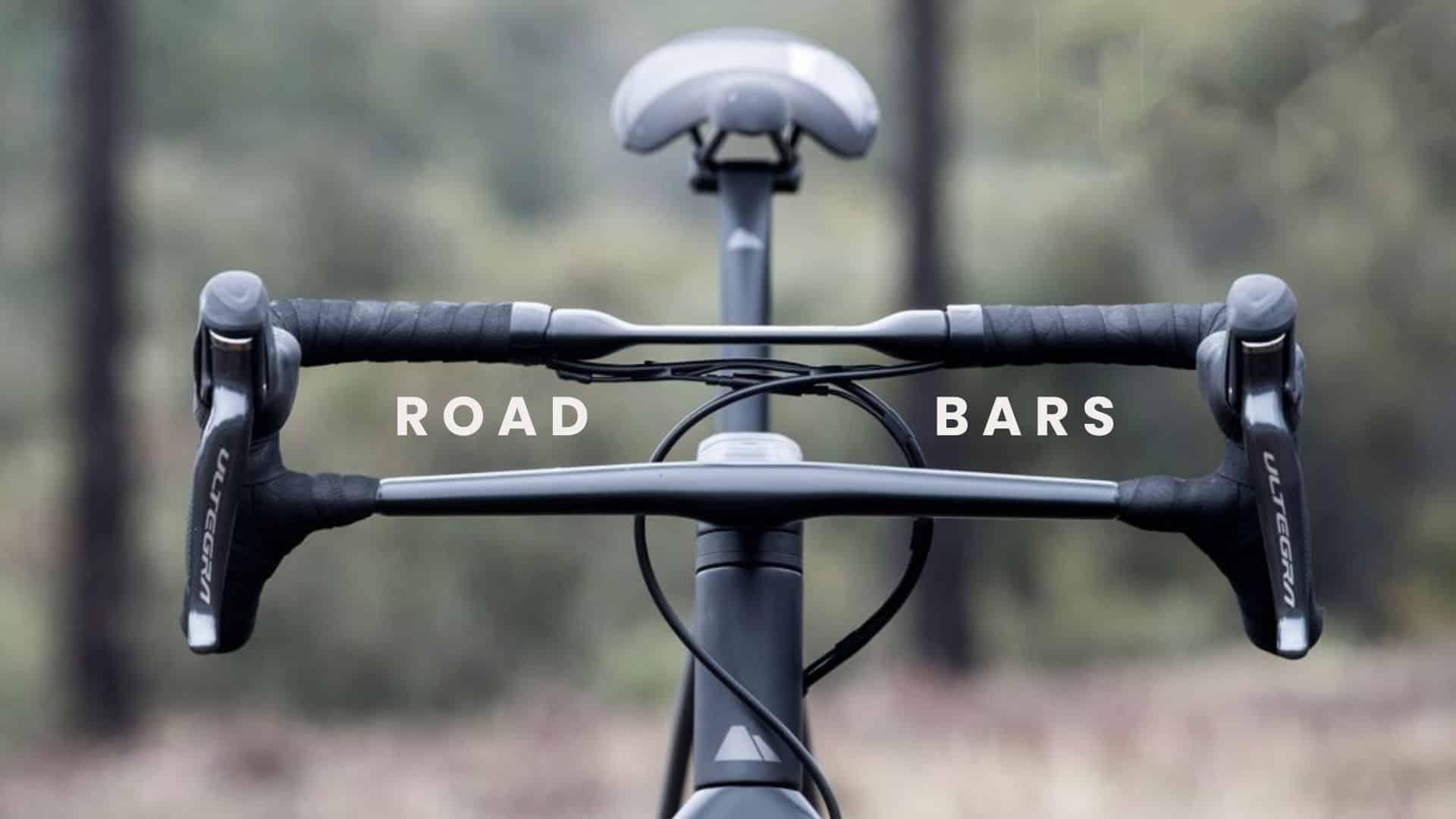
Standard drop handlebars typically found on road bikes, are generally suited for more experienced riders. I don’t recommend them for touring, especially when compared to the flared drop bar option, as they tend to be too narrow and challenging for beginners to manage effectively.
Pros
- Ideal for navigating through traffic due to their narrow build
- Offer quicker and more responsive cornering, aiding in swift maneuvers around hazards
- Provide multiple hand positions (drops, hoods, back, and front) for versatility
- Allow for a straight-back posture on flat terrains
- Enable riders to adopt an aero position, combating headwinds for increased efficiency
Cons
- Lack comfort on rough terrains
- Shorter length makes fitting bikepacking handlebar packs/rolls challenging
- Can be difficult for less experienced riders to handle
- Lead to poor posture over extended trips, potentially causing back soreness
- Brake levers are less accessible
To be candid, I won’t recommend any specific handlebars of this type for touring purposes. There are far superior options on this list. That said, if standard road dropbars are all you have, particularly those that come with traditional bar-end shifter touring bikes, they can still be functional. My main concern lies with handlebars from road bikes, which are typically very narrow.
However, I’ve encountered bike travelers who effectively use drop bars in combination with aero bars. This setup can be more efficient in terms of aerodynamics, offering additional space on the handlebars for mounting gear and gadgets. It also provides a variety of hand positions and opportunities to move about, stretching the body and slightly lifting you off the saddle. When combined with the Fred Bars can be a comfortable option for long tours. Read more about a friend who toured around Australia on a fixie with an aero setup.
Flared Dropbars / Gravel Handlebars
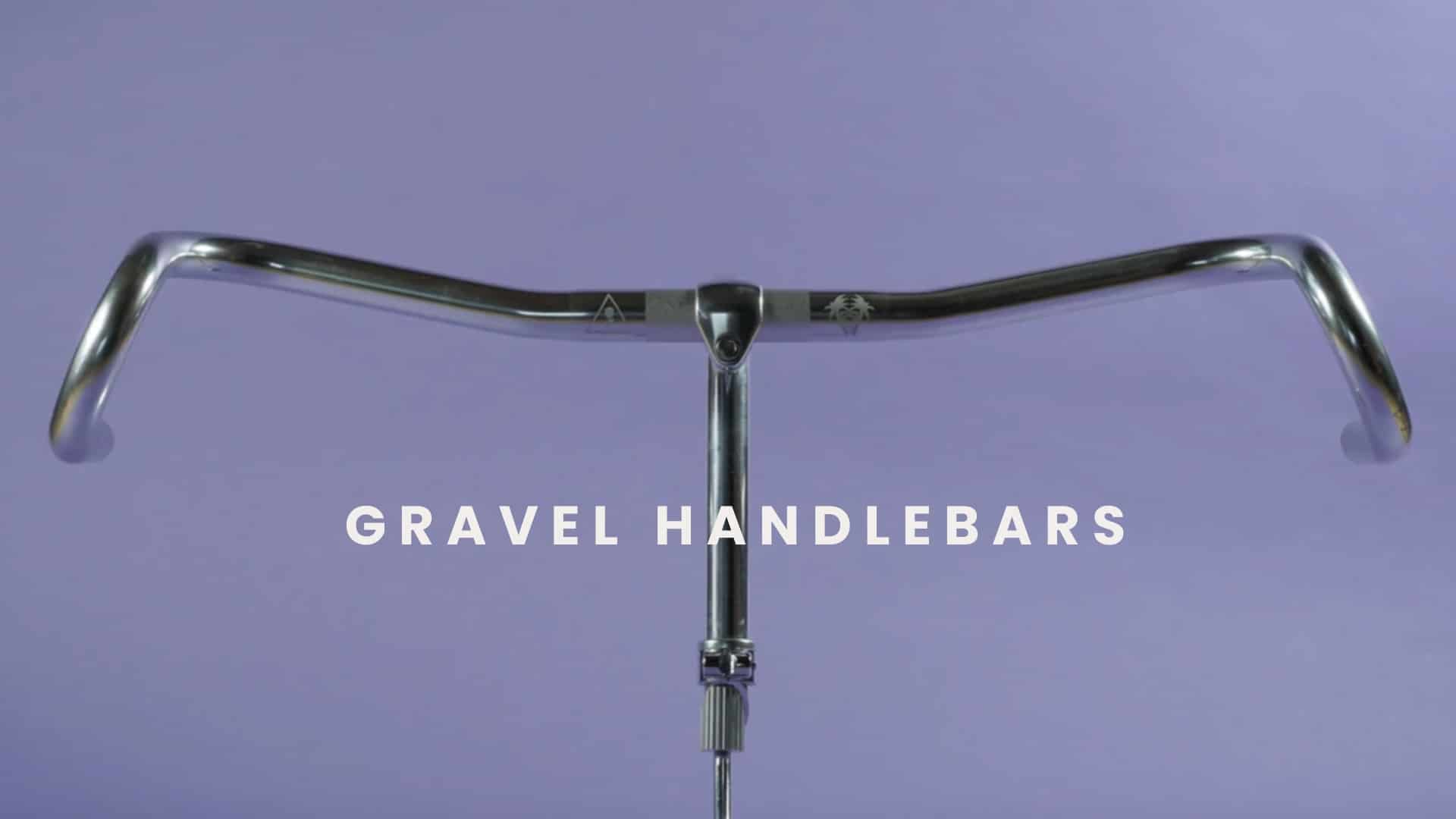
Currently, my favorite type of handlebar is the flared dropbar. I’ve recently equipped my Surly Long Haul Trucker with Funn G Wide 500 mm Bars. These handlebars offer excellent stability and added cushioning, especially when navigating rough terrain.
Update: Since purchasing my dream adventure bike, I changed the stock handlebars for another set of these Funn G Wide’s they are that comfortable!
Popular in cyclo-cross and gravel racing communities, flared dropbars provide superior control over off-road surfaces. For touring, they shine with their range of hand positions, effectively reducing fatigue. The additional length offers ample space for mounting accessories and fitting handlebar bags, making them highly practical for long rides. Compared to conventional dropbars, flared versions offer a more natural feel.
How about considering super wide drop bars, with widths up to 750 mm? Are they a worthwhile option?
Still deciding between bikes like Sami?

Choosing the right bike can be overwhelming – but it doesn’t have to be.
Join the Bike Buyers Masterclass
A 2-hour step-by-step guide that helps you confidently choose your perfect adventure bike, just like Sami did.
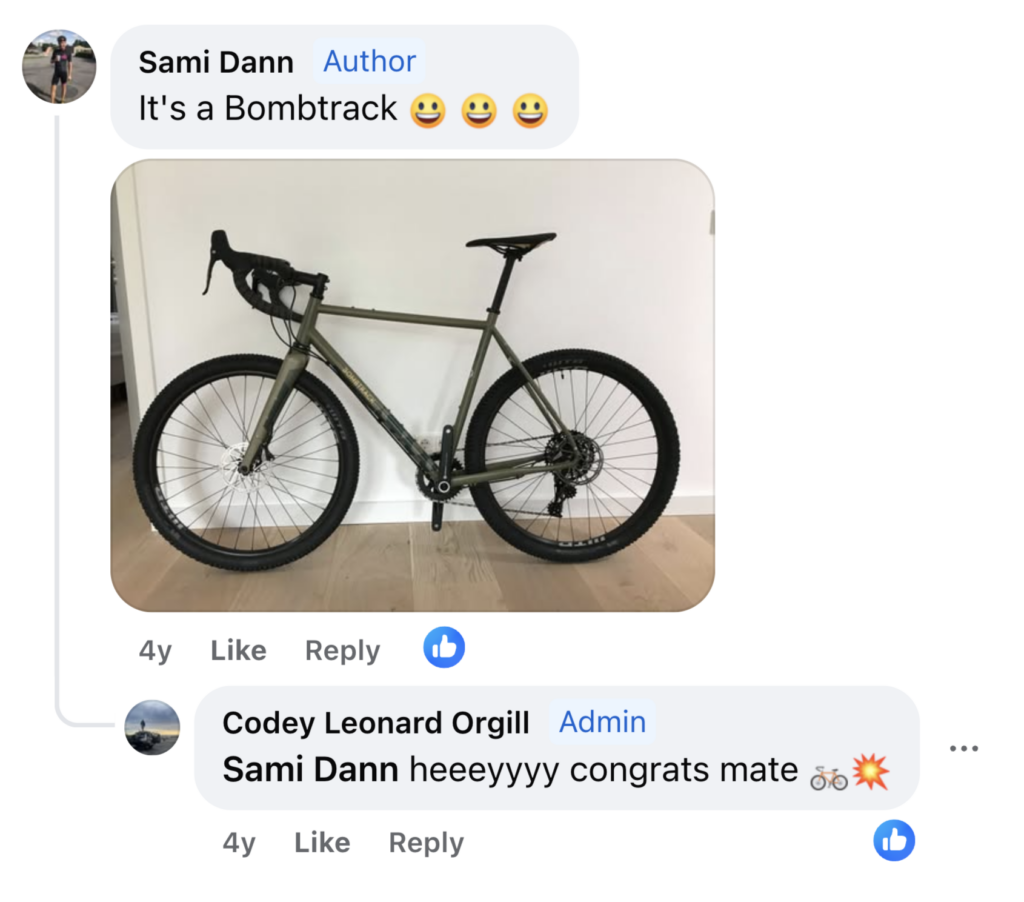
Simplify specs. Avoid costly mistakes. Get support from 3,000+ others.
Plus: Win up to $500 in gear, score exclusive discounts, and join our private community.
Flared Gravel Handlebars for Bikepacking and Touring
Funn G Wide Gravel Handlebars

Opting for the longer 500 mm version over the 480 mm makes sense, as it offers more value.
I appreciate their width. Designed for intense gravel riding, these bars are constructed from heat-treated, triple-butted, high-grade 6069 alloy, featuring a 31.8 mm clamp diameter, a 6° back sweep, and a 25° flare. Their width provides generous space for luggage, ideal for lengthy tours.
Initially, I was struck by the long reach and deep drops of these bars – a stark contrast to the short and shallow design of standard road drop bars. You might consider a shorter stem for the best fit.
Crust Towel Rack

Another highly recommended option among bike tourers and bikepackers is the Crust Towel Rack. While slightly more expensive than many touring handlebars, they come from an Australian brand with a commendable ethos, making them worth considering.
Salsa Woodchippers
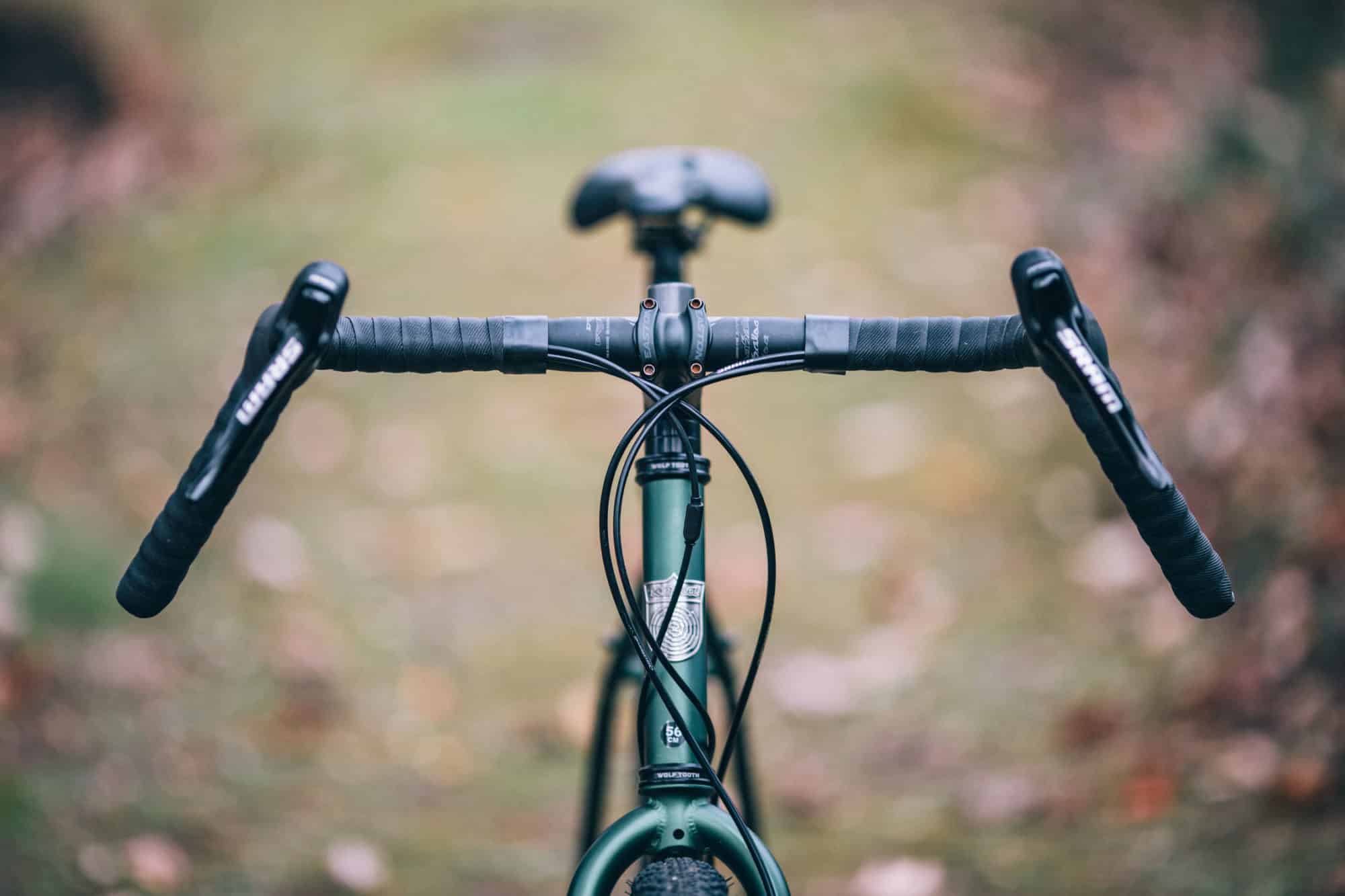
The Salsa Woodchippers boasts a lightweight (375 grams) yet robust 6061-T6 aluminum alloy construction. Their unique shape enhances comfort and control on rough terrains. The ergonomic design is compatible with integrated road shift/brake levers or bar-end shifters. Featuring a 114mm drop, 56mm reach, 25° flare angle, and 38° drop angle, they require a specific setup for optimal comfort, with the brake/shifter position ideally canted downward for a 20-25° angle of the drops.
Looking for the most comprehensive flared gravel drop bar catalog on the Internet? Comparing over 60 gravel handlebars!
Comparing These Bars: Salsa Woodchippers vs Crust Towel Rack vs Funn G Wide

| Manufacturer / Model | Width | Rise | Sweep | Drop | Reach |
| Funn G Wide | 500 mm | N/A | 6° | 130 mm | 110 mm |
| Crust Towel Rack | 675 mm | N/A | 15° | 115 mm | 100 mm |
| Salsa Woodchippers | 440 mm | N/A | 25° | 114 mm | 56 mm |
Flat / Riser Handlebars (MTB Riser Bars with Ergon Grips)
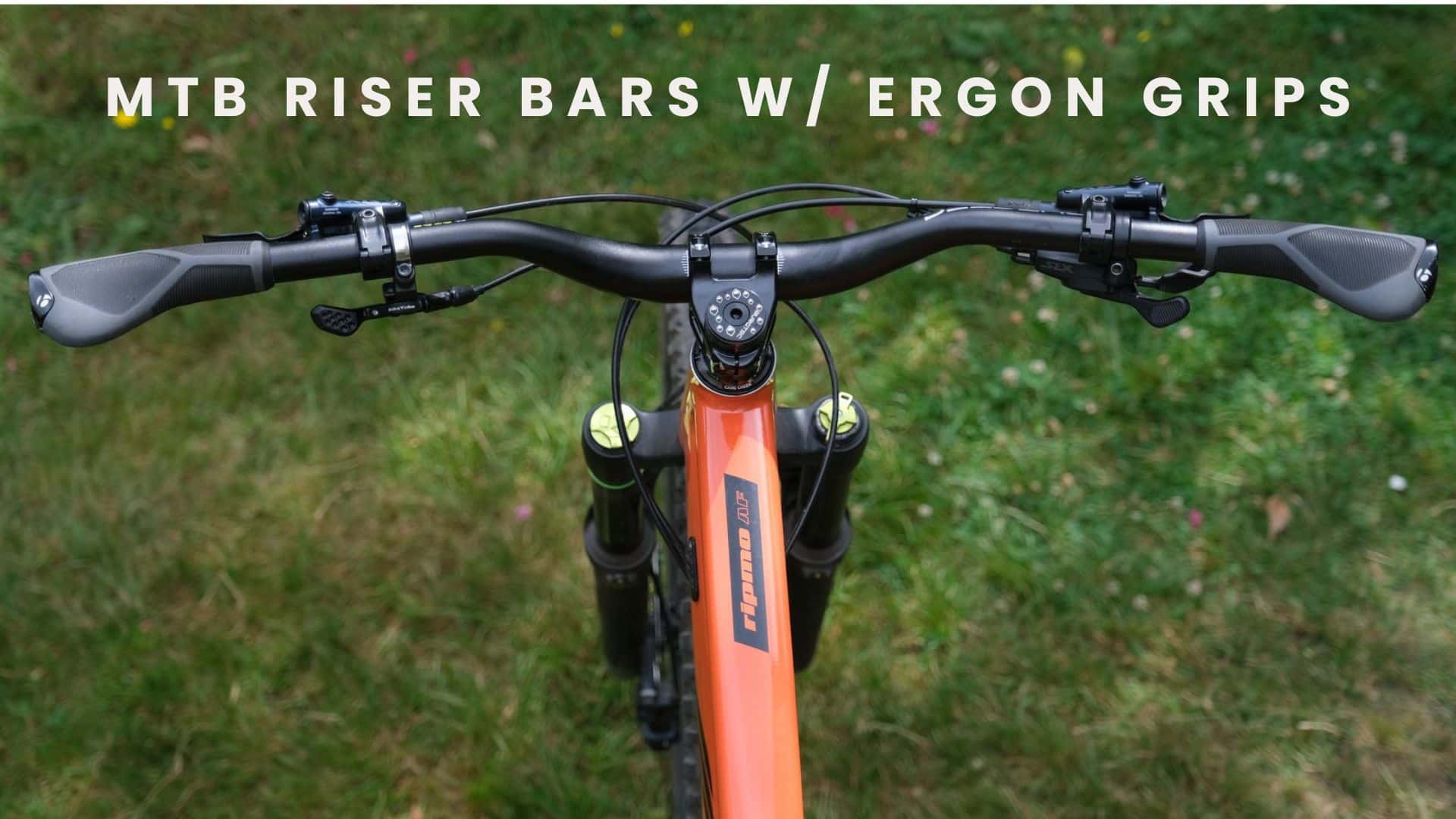
Flat handlebars are a common choice for some expedition touring bikes, though they rank as my second-to-last preference for touring handlebars. However, it’s important to note that they still offer good functionality, depending on your specific needs. Many tourers recommend MTB Riser Handlebars equipped with Ergon Grips.
Pros
- Enhanced control: Flat bars provide better handling compared to many other types.
- Leverage when riding out of the saddle: This feature is especially useful on challenging terrains.
- Easy to swap grips: You can customize your handlebar to suit your comfort needs.
- Ample mounting options: There’s plenty of space for accessories, making these bars versatile.
- Beginner-friendly: Their simplicity and ease of use make them a great choice for novice bike tourers.
Cons
- Limited hand positions: Without bar-ends like Ergon Grips, these handlebars primarily offer just one hand position, which is a significant reason why they may not be my top recommendation.
- Maneuverability: Depending on their width, navigating through tight traffic can be challenging.
- Wrist ergonomics: Standard flat handlebars may not provide the best ergonomic support for your wrists during long rides.
Butterfly Bars or Trekking Handlebars
Butterfly or Trekking Handlebars are the go-to choice for expedition touring bikes, commonly used for multi-year tours worldwide. Based on my own experience of over 7,500 KM, I highly recommend them. These bars offer a wealth of hand positions, enhancing comfort and reducing fatigue on long rides. Read my detailed review here.
Pros
- Encourages an upright riding position
- Promotes better posture
- Provides comfort with various hand positions
- Frequent changes in riding position possible
- Cost-effective compared to other options
- Wide grip allows for substantial control and leverage on rough surfaces
Cons
- Not the most aero bars (super upright)
- Lack the cool factor
Alternative Touring Handlebars (ALT Bars / Comfortable MTB Handlebars)

There’s a growing interest in alternative handlebars, or ‘alt bars’, and ‘comfort mountain bike bars.’ Unlike traditional touring handlebars such as butterfly or trekking bars, these alt bars are designed specifically for mountain biking. They are capable of handling challenging terrains, including trails and dirt roads. These handlebars differ from standard MTB bars by offering more backsweep, rise, and sometimes width, tailored to enhance rider comfort and reduce strain.
Furthermore, the angle of the handlebars, or the ‘sweep,’ is a critical factor. Handlebars with a 15-degree sweep or more can significantly reduce wrist pressure and shoulder tension. This angle allows for a more natural position of the ulnar nerve, preventing numbness over long distances. Some handlebars even feature extreme angles, ranging from 30-45 degrees, requiring riders to experiment with different stem lengths to maintain or alter the reach for a comfortable riding position.
ALT Bars for Bikepacking and Touring
Jones SG 2.5 Aluminum Loop H-Bar

The Jones H Bar offers numerous hand positions, aligning with the natural direction of arm flexion. This design reduces strain compared to standard flat bars. However, some riders find the wide 660 mm bars challenging on rough terrain, as they may not offer precise maneuvering in technical conditions.
Surly Moloko Bar

The Moloko Bar gives you a range of hand positions, keeping you comfortable and in control on various terrains. It offers plenty of space for mounting accessories. The standard bar width is 735mm, but with pre-marked cut lines, you can easily adjust it to 685mm. These bars are made from Chromoly steel with a 31.8 mm clamp diameter.
On One Geoff Bar
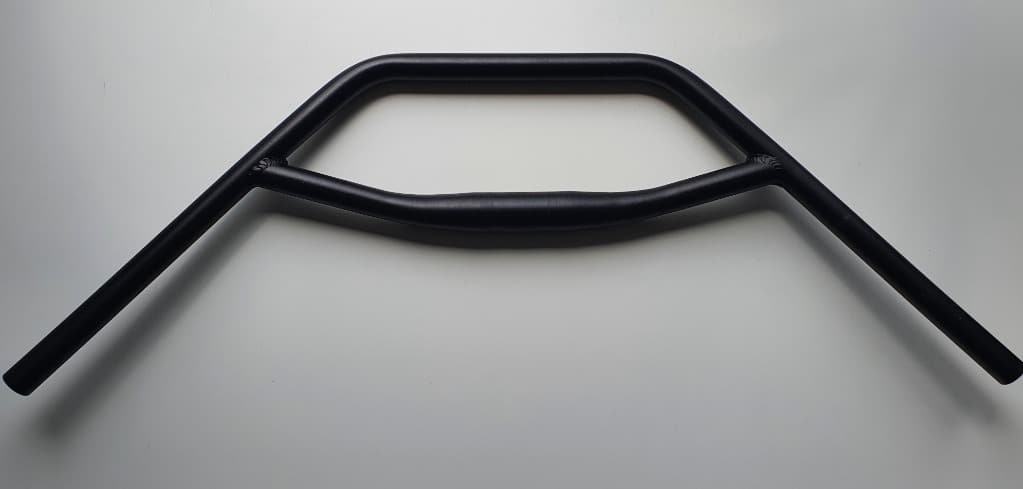
Optimized for long-distance riding over tough terrain, the On One Geoff Bar features a 31.8 mm clamp diameter, a length of 720mm, a 45-degree backsweep, a grip length of 215 mm, and a 13 mm rise.
Orange Velo Crazy Bar

I’m eagerly looking forward to trying the Orange Velo Crazy Bar for my Surly LHT. Its unique design, as the name suggests, is ‘crazy’ and offers immense potential for various hand positions. It’s a mix of cruiser bar and bull horns, with different clamp diameters for flexibility. The main bar is 22.2 mm, fitting MTB grips, levers, and shifters, while the bull horns are 23.8 mm for road levers/bar-end shifters. The clamp area is 25.4mm. This unusual design provides two main comfortable hand positions: on the grips and the horns.
Koga Denham Bar

I had the pleasure of interviewing Alee, the founder of Cycling About.com. He collaborated with Koga to develop the Koga Denham Bar, combining the best features of the Moloko, Jones Loop H-Bar, and Orange Velo Crazy Bar into one versatile handlebar. Read more about these innovative bars here.
Get the full scoop on over 22 comfortable mountain bike handlebars perfect for your next bikepacking adventure!
The best way to compare handlebars

Do you have multiple handlebars in mind? But not sure which one to choose. Consider heading over the What Bars to compare bars in a visual way to see which one would be best suited for you.

